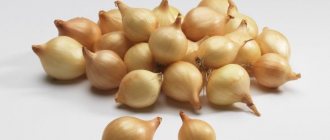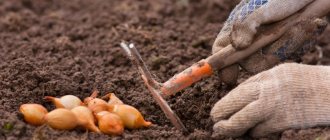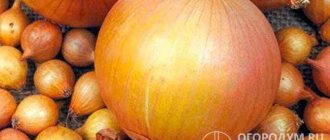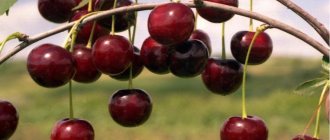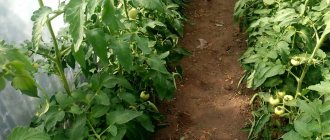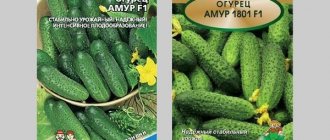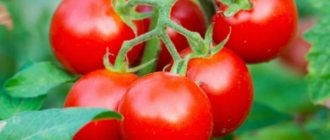Berry ripening time and tree yield
The Nadezhda variety begins to bear fruit 4-5 years after planting the seedling. You can start harvesting the harvest at the beginning of July, and in the southern regions you can enjoy the delicious fruits already at the end of June.
Practice shows that from a young tree you can get 15-20 kg of fruit, and from plants that have reached 15 years old - up to 60 kg. This indicator corresponds to an increased level of productivity.
Attention! Nadezhda is a partially self-fertile variety. Therefore, for her, pollinators need to be planted on the site, which will serve as: Large Black, Lada, Kent.
Description and characteristics of cherry Nadezhda
The tree is tall (5–6 meters), the crown is medium dense, has the shape of a wide pyramid or is round. The dark gray bark on the trunk is rough. Longitudinal cracking of the trunk can be of medium or severe degree. Straight shoots have a significant length of internodes. The inflorescences consist of two or three large (up to 4 cm in diameter) flowers. Pink spots appear on the snow-white petals towards the end of flowering. The trees bloom early.
The fruits have the following appearance characteristics:
- large size, about 6 grams;
- the shape is flat-round, sometimes almost round, with slightly flattened sides;
- The skin color is dark red.
Dark red Nadezhda cherry fruits, quite large, flat-round in shape
The quality of cherries is characterized by a number of indicators:
- the pulp structure is medium-dense, homogeneous;
- pulp and juice are red;
- the taste is very good, sweet with pleasant acidity, without astringency, with a cherry aroma, tasters rated it 4.5 points;
- sugar content - 9.1-14.0%, acids - 0.10-0.15%;
- pit up to 7% by weight of the cherry, semi-free.
The stalk is 1.2–1.8 mm thick, 3–4 cm long, easily detachable, and is detached from the fruit dry or semi-dry. The purpose of use is universal. The quality of processed products is high, compotes are especially valued. According to some sources, transportability is good.
Nadezhda cherry fruits are excellent for processing; compotes are especially tasty
The variety is mid-season; in the southern regions of the Central Black Earth region, the harvest is ready for harvest in late June or early July. Duke is quite early in pregnancy. Trees that use antipka as a rootstock begin to bear fruit in the fourth or fifth year after planting in the garden. Productivity is high and steadily increasing. The average fruit harvest during the first four years of fruiting was 16.4 kg per tree (7.5 kg more than the control variety Kent). Mature trees produce about 22 kg/tree. (7 kg more than Kent). In the most productive years, fifteen-year-old trees produced up to 50–60 kg of produce. Plants do not have the ability to self-pollinate.
The winter hardiness of wood in the climatic conditions of the south of the Central Black Earth region is high; when the temperature dropped to -36.4ºC, the degree of freezing of plants was no higher than 1.6 points, which is a very good indicator (1 point characterizes the complete absence of damage). Flower buds are more vulnerable to low temperatures:
- at -30ºC no damage was observed;
- in frosts down to -32.2ºC, up to 72% of flower buds were damaged;
- a temperature of -36.4ºC led to the death of almost 96% of the generative organs.
The variety has good immunity to coccomycosis, and is also almost not affected by moniliosis. The description does not mention drought tolerance, but it is known that cherry-cherry hybrids are characterized by a high degree of drought resistance.
Cherry cherry has many benefits:
- high productivity;
- large marketable fruits;
- very good dessert taste;
- good quality of processed products;
- quite high early pregnancy;
- winter hardiness of wood;
- acceptable tolerance to low temperatures of flower buds;
- immunity to coccomycosis and moniliosis.
Disadvantages include tallness and self-sterility.
Appearance
Cherry Nadezhda has the following species parameters.
Height and dimensions of an adult tree
A mature tree can reach up to 6 m in height. The crown is of medium density, pyramidal or round in shape, spreading, up to 7 m wide. The plant is decorated with oval-shaped foliage, matte, jagged with a slight shine.
Large snow-white flowers collected in clusters of inflorescences attract attention. Towards the end of flowering, the buds become covered with pink spots.
What does a cherry tree look like?
Fruit
The variety is valued for its large fruits, which have a rich dark red color and a round shape. The weight of one cherry is from 5.5 to 6 g.
The bone is small and comes off easily. The pulp received a high rating during tasting - 4.5 points. It is characterized by a dark red color, a pleasant sweet and sour taste without astringency and aroma.
Information! Due to the dense skin, the fruits do not crack, and thanks to the thick and short stalk, the berries do not fall off.
History of the Nadezhda variety
The possibility of crossing cherries and sweet cherries has been known since the seventeenth century. It was from that time that the first representative of cherry-cherry hybrids, the English variety May-Duke (May Duke), began to be cultivated, from which they got their name - Duke. It is believed that this type of plant still has more cherry characteristics.
I. V. Michurin created two cherry trees - Beauty of the North (1888) and Black consumer goods (1926). In the second half of the twentieth century, there was another surge of interest in this type of plant; breeders developed a number of new varieties with improved characteristics.
The cherry hybrid Nadezhda appeared at the Rossoshansky zonal experimental horticulture station. Authorship assigned to A. Ya. Voronchikhina. The scientist pollinated the Griot Ostheimsky cherry with pollen from the Northern and Lickernaya cherries, having previously mixed it. Parent forms have the following characteristics:
- Griot Ostheim is an ancient variety (presumably of Spanish origin), known since the end of the 18th century, it is widely used in breeding work. It has high early fruiting, productivity and good taste of fruits.
- Both representatives of the second parental pair have fairly high winter hardiness and abundant yields, and the Northern one is also resistant to coccomycosis.
In 1995, Duke was sent for state variety testing in the Central Black Earth region.
Resistance to low temperatures and drought
Cherry is characterized by frost resistance, able to withstand temperatures down to -30 ° C. The plant is also resistant to temperature changes, but prolonged frosts can damage flower buds.
Like all varieties of cherries, Nadezhda is not afraid of drought. During the season, it is enough to moisten the tree three times, but do not forget that excessive humidity can destroy the crop.
You need to know the nuances of planting and care
Botanical description
A tall tree that requires the formation of a crown, since in natural conditions it stretches strongly upward and has a pyramidal crown.
On the brown powerful branches of the plant there are leaves resembling cherry leaves in shape, but larger in size. Same as cherry. However, the dark green color of the cherry leaves has transformed into the rich emerald color characteristic of cherry trees.
Read more: Mildew on grapes: measures to combat the disease, when to spray, treatment
Duke blooms very beautifully - with white or pink large flowers collected in brushes. In central Russia and in more northern regions, flowering occurs in June.
Duke Hodosa
An excellent variety with dessert berries that are used in the confectionery industry. Amazing jams and preserves, marmalade and candied fruits, decorating tarts and cakes with fresh fruits. The variety owes its birth to the breeder A. Sychov, who managed to create a unique fruit tree that is not afraid of frost or drought, giving a bountiful harvest every year! Disease resistant.
Duke Spartan
It has an exquisite taste, sweetness and juiciness. An adult tree bears fruit every year and gives the gardener a generous harvest of very large berries that are resistant to the vagaries of the weather, which is why they got their name. Breeders A. Sychov and A. Taranenko took part in the creation of the variety. The fruits of Spartanka make excellent compotes for the winter and delicious liqueurs.
Duke Torch
It is very easy to maintain, since even an adult tree rarely exceeds 3 meters in height. Harvesting does not cause much trouble. The berries are very juicy, large, sweet and sour. Housewives are happy to use them for preparing compotes for the winter, as well as for home production of liqueur with an unforgettable aroma. It grows without problems in northern latitudes and can withstand air temperatures of almost minus 40 degrees.
Duke Nadezhda
Incomparable, large, sweet berries of a very dark color with the same dark pulp. An adult tree produces a rich harvest - about 20 kg of selected berries. And at the same time the plant is frost-resistant. It only does not tolerate waterlogging due to the high level of groundwater.
Duke fruits are truly magnificent - large, decorative, juicy. The hybrid reflects the best of two wonderful cultures. The piquant aroma and richness of cherries, as well as the juiciness, sweetness and tenderness of cherries. The size of the berries was inherited from cherries - they are much larger than cherries.
Features of planting and care
An important criterion when growing a cherry tree, on which the regularity of fruiting directly depends, is proper planting and care.
Recommended timing
You can plan planting work both in spring and autumn. But most gardeners in the Moscow region and Central Russia prefer autumn planting, so that next spring the young tree will rapidly grow. In areas with harsh winters, it is better to plant the plant in the spring to prevent the seedlings from freezing.
Site selection and soil preparation
The variety grows well on light and loamy soils with a neutral environmental reaction and does not tolerate stagnant groundwater.
It is important to prepare the site a month before the intended planting, by digging up the soil, saturating it with organic matter and mineral fertilizers.
What crops can and cannot be planted next to cherries?
Cherry is a stone fruit crop, so it is advisable to place it close to similar plants. However, when choosing plums, peaches or apricots as neighbors, you need to take into account that they should not be tall
Information! Pome crops, except pears and apples, are not enemies of the plantings, but can obscure it with their spreading crowns.
It is better to plant cherries next to cherries, mountain ash, and hawthorn.
Selection and preparation of planting material
You can provide yourself with fresh, healthy cherries by choosing the right planting material. The seedling must have a formed root system, about a meter high, without damage or signs of disease.
Before planting, it is important to cut off damaged roots and soak them in clean water for 4 hours, then treat the entire root system with mullein and clay mash.
How to plant correctly
To plant a Nadezhda cherry seedling correctly, thereby provoking rapid growth and fruit formation, you need to know some planting points:
- Dig a hole 50 cm deep and 60 cm in diameter at a distance of 3 m from each other.
- Place the seedling in the hole so that the root collar is at ground level and cover with soil mixture.
- Stepping back 30 cm from the trunk, make small depressions in a circle and pour warm water at the rate of 2 buckets per tree.
- Mulch the tree trunk using compost or humus.
Important! You should not bury the root collar, as this can lead to its sagging.
Landing Features
Watering and fertilizing schedule
According to the description, Nadezhda cherry is a drought-resistant plant. It is recommended to water the tree no more than 3 times per season:
- after flowering;
- when fruits ripen;
- before winter, when the leaves fall.
History of the Cherry-Cherry Hybrid
Duke berries have been known in Russia since the century before last, thanks to the efforts of Michurin.
In 1888, the famous breeder and biologist Ivan Michurin crossed the “Bel” variety of cherries with the “White Winklera” variety of cherries and obtained the original berries, called “Beauty of the North.” This is how the scientist enriched Russian gardens. Europe became acquainted with dukes a long time ago, back in the 17th century, and, by chance, as a result of spontaneous pollination! In our mostly harsh climate, pampered European specimens did not take root well due to low winter hardiness. The new variety was supposed to solve the climate problem. However, everything was not easy with him either.
And only at the end of the 20th century, winter-hardy varieties were finally developed, characterized by excellent berry quality and high yields.
The popular names “cherry cherry” and “cherry cherry” did not catch on, but the English “duke”, which means “duke” (the berries were originally called May Duck), became ubiquitous.
Planting a seedling
The variety is planted in early spring or autumn. Before planting, it is necessary to prepare the planting hole. The seedling is unpretentious and quickly takes root if it is covered before the frost arrives.
One-year and two-year-old seedlings are selected. To make them grow better, excess roots are cut off, and the seedling itself is soaked in water for several hours. For planting cherries, choose a well-lit plot of land. You should not choose a low-lying area, otherwise excess moisture will accumulate at the rhizome, which will lead to rotting of the roots and rapid withering of the tree.
If the soil on the land is clayey, add regular sand to the hole before planting the seedling. The quality of sandy soils can be improved with nitrogen fertilizers. You should not choose an area with drafts or in the shade. In such conditions, the cherry will grow small and weak.
For a stable harvest, you need to choose a site where self-fertile varieties grow: they will help pollinate the cherry, which will increase its yield. Good pollinators are Lada, Kemskaya and Large Black cherries.
The Nadezhda cherry variety begins to bear fruit 3–4 years after planting. All this time, the tree feeds on fertilizers added to the planting hole. Prepare the hole 2 weeks before planting the material. To ensure that the seedling takes root quickly, a mixture of manure, minerals and potassium is used. They are mixed with the excavated soil and placed at the bottom of the hole.
The treated roots are immersed in the hole and covered with remaining soil. A roller is formed around the seedling, which will protect the crop from excess moisture and make watering more efficient. After planting, 3-4 buckets of clean warm water are poured into the tree trunk circle. The tree trunk circle is mulched. The soil is not fertilized until the first fruits appear.
Characteristics of the variety
Cherry Nadezhda is a mid-season variety. Its fruits reach maturity in July, but in the southern regions they can ripen in the last ten days of June. Trees grafted on antipka begin to bear fruit in the fourth or fifth year and are characterized by high early fruiting.
Cherry Nadezhda is characterized by
a fairly high level of productivity.
You can harvest up to 16 kilograms of harvest from one tree , however, with such a height of trees, this fact is not surprising.
Such trees tolerate winter well, but during particularly severe frosts, flower buds may die.
The Rossoshanskaya Chernaya, Tamaris, Turgenevka and Chernokorka varieties also demonstrate high yields.
